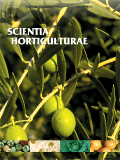Elevated atmospheric CO2 will change the requirements plants have for minerals, mainly nitrogen, altering the relationship between nutrient demand and plant growth. Here, we evaluated the interacting effects between two concentrations of CO2 (390 or 750 µL L-1) and two nitrogen (N) levels (3 mM or 8 mM) on gas exchange, N use efficiency (NUE), and dry mass responses of papaya seedlings. The study was conducted in a climate controlled greenhouse using 3.5 L pots and six replicates for 62 days. No significant effects from N or CO2 were noticed for leaf conductance to water vapor and transpiration. However, CO2 elevation to 750 µL L-1 increased assimilation rate for both N levels. Elevated CO2 resulted in an increase of 52% and 16% of instantaneous water-use efficiency under high and low N, respectively, as compared to ambient CO2 (390 µL L-1). Lower N concentrations were observed for all the organs for plants grown under higher concentrations of CO2, regardless of the N level used. However, plants grown under elevated CO2 reached the highest NUEs. There was an N × CO2 interactive effect on the leaf, stem plus petiole, and root dry mass. However, no significant CO2 effect on the root:shoot ratio was observed. Our results revealed that elevated CO2 stimulated total dry mass accumulation of papaya plants, with the results being greatest for plants grown under lower levels of N.
Interactive effects between nitrogen fertilization and elevated CO2 on growth and gas exchange of papaya seedlings
Citation: Cruz, J. L.; Alves, A. A. C.; LeCain, D. R.; Ellis, D.; Morgan, J. A. 2016. Interactive effects between nitrogen fertilization and elevated CO2 on growth and gas exchange of papaya seedlings. Scientia Horticulturae. (Netherlands). ISSN 0304-4238. 202:32-40.
2016-12-13
BIODIVERSITY FOR THE FUTURE, CLIMATE CHANGE, CROP PROTECTION, GENEBANK
journal_article

